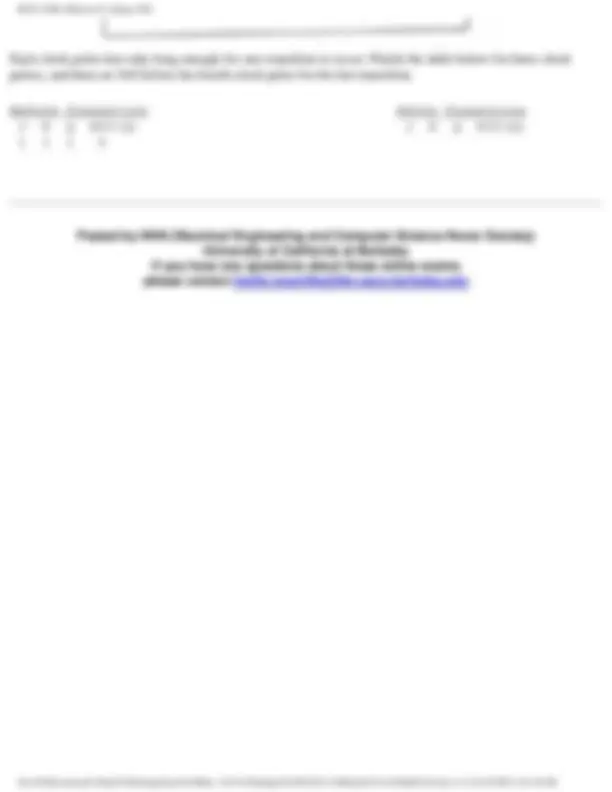



Study with the several resources on Docsity

Earn points by helping other students or get them with a premium plan


Prepare for your exams
Study with the several resources on Docsity

Earn points to download
Earn points by helping other students or get them with a premium plan
Community
Ask the community for help and clear up your study doubts
Discover the best universities in your country according to Docsity users
Free resources
Download our free guides on studying techniques, anxiety management strategies, and thesis advice from Docsity tutors
The questions and solutions for midterm 1 of the eecs 100b course at the university of california, berkeley, held in spring 1982. The exam covers topics such as semiconductor physics, digital logic design, and karnaugh maps.
Typology: Exams
1 / 3

This page cannot be seen from the preview
Don't miss anything!


Problem #
An n-type silicon wafer has 10 15 phosphorous atoms per cubic centimeter. Boron is diffused into the crystal
with the surface concentration of C 0 =10 19 per cubic centimeter. The diffusion constant D is 8 cm 2 per
second. The time of diffusion is only 3.125x10-10^ seconds. The resulting distance constant L is 10 -6^ meters. What is the concentration of p-type boron at the depth of 2.5 micrometers?
Problem #
A DTL NAND gate has all inputs tied together at 5 volts. The resistor to the power supply of 5 volts from the input diode anodes is 5000 ohms, the collector resistor is 2000 ohms. The load capcitance from the collector to ground C (^) L is 50 picofarads (50x10 -12). The capacitance from the input diode anodes to ground C (^) D is 10
picofarads.
(a) Assuming C (^) D is negligible, what is the time constant of the output circuit when the signals to all input
diodes go to zero simultaneously and instantly?
(b) Assuming C (^) L is neglible and all inputs are zero volts, what is the time constant of the voltage at the diode
anodes when the signals to all input diodes go to 5 volts simultaneously and instantly?
Problem #
Draw the circuit for a TTL NAND gate with push-pull output circuit. Show at least two inputs.
Problem #
Construct the truth table for
Problem #
Reduce this to the sum of products form.
Problem #
Draw the Karnaugh map for F in Problem (5).
Problem #
Synthesize F with NAND gates.
Problem #
In this circuit, the input to J is always 1.